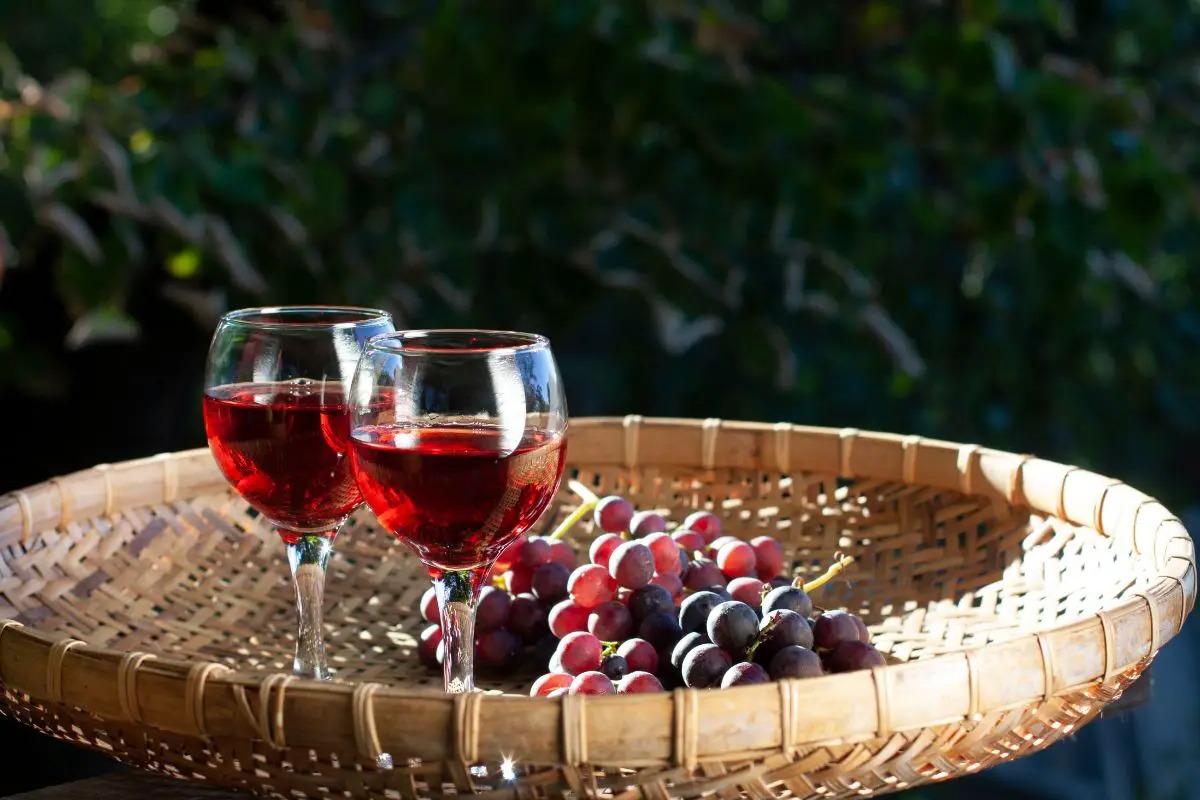
Wine, a drink loved by many, has a rich history and fascinating facts that might surprise even the most seasoned connoisseur. Did you know that wine has been around for over 8,000 years? This ancient beverage has been a part of human culture for millennia, evolving from simple fermented grape juice to the complex varieties we enjoy today. From the rolling vineyards of France to the sunny hills of California, wine production spans the globe, each region offering its unique flavors and traditions. Whether you're a fan of bold reds or crisp whites, there's always something new to learn about this timeless drink. Ever wondered why some wines age better than others? Or how about the reason behind swirling your glass before taking a sip? These intriguing tidbits not only enhance your appreciation but also make for great conversation starters at your next gathering. Cheers to uncovering the secrets of wine!
The Origins of Wine
Wine has been a beloved beverage for thousands of years. Its rich history is filled with fascinating stories and surprising facts. Let's explore some intriguing tidbits about this ancient drink.
-
Ancient Beginnings: Wine production dates back to around 6000 BC in what is now Georgia. Archaeologists discovered ancient pottery with traces of wine, indicating its early origins.
-
Egyptian Influence: The Egyptians were among the first to document winemaking. They used wine in religious ceremonies and buried it with pharaohs for the afterlife.
-
Greek Mythology: In Greek mythology, Dionysus was the god of wine. Festivals in his honor often involved wine consumption, celebrating its divine connection.
The Art of Winemaking
Winemaking is both an art and a science. The process has evolved over centuries, yet some traditional methods remain unchanged.
-
Fermentation Process: Fermentation is key in winemaking. Yeast converts sugars in grapes into alcohol, creating the wine we enjoy.
-
Aging in Oak: Many wines are aged in oak barrels, which can enhance flavors and add complexity. The type of oak and length of aging can significantly impact the wine's taste.
-
Terroir's Role: Terroir refers to the environment where grapes are grown, including soil, climate, and topography. It plays a crucial role in a wine's characteristics.
Wine Varieties and Styles
Wine comes in countless varieties and styles, each with unique flavors and aromas. Here's a glimpse into the diverse world of wine.
-
Red vs. White: The primary difference between red and white wine is the grape skins. Red wine is fermented with skins, giving it color and tannins, while white wine is not.
-
Sparkling Wines: Sparkling wines, like Champagne, contain bubbles from carbon dioxide. This effervescence is achieved through a second fermentation process.
-
Rosé's Popularity: Rosé is made by allowing red grape skins to contact the juice for a short time. Its refreshing taste has made it increasingly popular worldwide.
Wine and Health
Moderate wine consumption has been linked to various health benefits. Let's look at some ways wine can positively impact well-being.
-
Heart Health: Red wine contains antioxidants like resveratrol, which may promote heart health by reducing bad cholesterol and preventing artery damage.
-
Longevity: Some studies suggest that moderate wine drinkers may live longer than those who abstain, possibly due to wine's beneficial compounds.
-
Mental Health: Wine, in moderation, may reduce stress and anxiety, providing a calming effect after a long day.
Wine in Culture and Society
Wine has played a significant role in cultures worldwide, influencing art, literature, and social customs.
-
Roman Influence: The Romans spread viticulture throughout Europe, establishing vineyards in regions like France and Spain that remain famous today.
-
Wine in Literature: Wine has been a muse for many writers, from ancient poets like Homer to modern authors like Ernest Hemingway.
-
Social Rituals: Sharing wine is a common social ritual, symbolizing friendship and celebration across various cultures.
Fun and Quirky Wine Facts
Wine is not just about sophistication; it also has its share of fun and quirky facts that might surprise you.
-
Wine Baths: In Japan, some spas offer wine baths, claiming the antioxidants rejuvenate the skin.
-
Oldest Bottle: The oldest known bottle of wine dates back to 325 AD and is displayed in a museum in Germany.
-
Wine in Space: Astronauts have taken wine to space, though drinking it in zero gravity presents unique challenges.
Wine and Food Pairing
Pairing wine with food can enhance the dining experience. Here are some tips and facts about finding the perfect match.
-
Classic Pairings: Red wine with red meat and white wine with fish is a classic pairing rule. The flavors complement each other beautifully.
-
Cheese and Wine: Cheese and wine are a match made in heaven. The acidity in wine balances the richness of cheese, creating a harmonious taste.
-
Spicy Foods: Sweet wines like Riesling can balance the heat of spicy dishes, providing a refreshing contrast.
Wine Production Around the World
Wine is produced in many regions, each offering unique flavors and styles. Let's explore some renowned wine-producing areas.
-
France's Prestige: France is known for its prestigious wine regions like Bordeaux and Burgundy, producing some of the world's finest wines.
-
Italy's Diversity: Italy boasts a diverse range of wines, from the robust reds of Tuscany to the sparkling Prosecco of Veneto.
-
New World Wines: Countries like the United States, Australia, and Chile are known for "New World" wines, often characterized by bold flavors and innovation.
Wine Tasting and Appreciation
Tasting wine is an art that involves more than just sipping. It engages all the senses, offering a rich experience.
-
The Five S's: Wine tasting involves five steps: See, Swirl, Sniff, Sip, and Savor. Each step enhances the appreciation of the wine's qualities.
-
Aroma Wheel: An aroma wheel helps identify different scents in wine, from fruity to earthy notes, enhancing the tasting experience.
-
Wine Glass Shapes: The shape of a wine glass can affect the taste. Different shapes are designed to highlight specific wine characteristics.
Savoring the Last Sip
Wine isn't just a drink; it's a tapestry of history, culture, and science. From its ancient roots to its modern-day innovations, wine has been a constant companion in human celebrations and reflections. Whether you're a casual sipper or a dedicated connoisseur, understanding these 27 facts can deepen your appreciation for every glass. The variety of grapes, the art of winemaking, and the subtle nuances of flavor all contribute to the rich experience that wine offers. As you explore different regions and styles, remember that each bottle tells a unique story. So next time you pour a glass, take a moment to savor not just the taste but the journey it represents. Cheers to the world of wine—a delightful blend of tradition and innovation that continues to captivate us all.
Was this page helpful?
Our commitment to delivering trustworthy and engaging content is at the heart of what we do. Each fact on our site is contributed by real users like you, bringing a wealth of diverse insights and information. To ensure the highest standards of accuracy and reliability, our dedicated editors meticulously review each submission. This process guarantees that the facts we share are not only fascinating but also credible. Trust in our commitment to quality and authenticity as you explore and learn with us.


